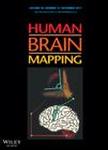版权所有:内蒙古大学图书馆 技术提供:维普资讯• 智图
内蒙古自治区呼和浩特市赛罕区大学西街235号 邮编: 010021

作者机构:Temple Univ Coll Sci & Technol Dept Comp & Informat Sci Philadelphia PA 19122 USA Temple Univ Coll Liberal Arts Dept Psychol Philadelphia PA 19122 USA Temple Univ Coll Liberal Arts Decis Neurosci Philadelphia PA 19122 USA
出 版 物:《HUMAN BRAIN MAPPING》 (人脑图像描记)
年 卷 期:2020年第41卷第9期
页 面:2263-2280页
核心收录:
学科分类:0710[理学-生物学] 1001[医学-基础医学(可授医学、理学学位)] 07[理学] 1010[医学-医学技术(可授医学、理学学位)] 09[农学] 1009[医学-特种医学]
基 金:National Institutes of Health [ROI MH091113]
主 题:algorithm design data mining functional magnetic resonance imaging neuroimaging
摘 要:Detection of the relevant brain regions for characterizing the distinction between cognitive conditions is one of the most sought after objectives in neuroimaging research. A popular approach for achieving this goal is the multivariate pattern analysis which is currently conducted through a number of approaches such as the popular searchlight procedure. This is due to several advantages such as being automatic and flexible with regards to size of the search region. However, these approaches suffer from a number of limitations which can lead to misidentification of truly informative regions which in turn results in imprecise information maps. These limitations mainly stem from several factors such as the fact that the information value of the search spheres are assigned to the voxel at the center of them (in case of searchlight), the requirement for manual tuning of parameters such as searchlight radius and shape, and high complexity and low interpretability in commonly used machine learning-based approaches. Other drawbacks include overlooking the structure and interactions within the regions, and the disadvantages of using certain regularization techniques in analysis of datasets with characteristics of common functional magnetic resonance imaging data. In this article, we propose a fully data-driven maximum relevance minimum redundancy search algorithm for detecting precise information value of the clusters within brain regions while alleviating the above-mentioned limitations. Moreover, in order to make the proposed method faster, we propose an efficient algorithmic implementation. We evaluate and compare the proposed algorithm with the searchlight procedure as well as least absolute shrinkage and selection operator regularization-based mapping approach using both real and synthetic datasets. The analysis results of the proposed approach demonstrate higher information detection precision and map specificity compared to the benchmark approaches.